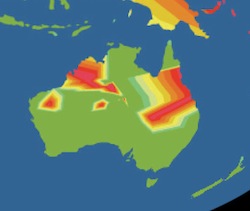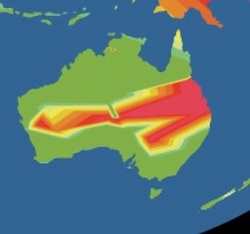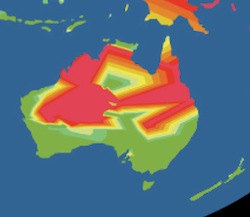MAYBE the reason I’m scared of them is that they’ve got pointy teeth and, potentially, they can kill you or at least rip off a limb or two.
Yes.. that’s definitely the reason I’m scared of sharks…. oh, and there’s that foreboding theme tune from Jaws.
Even though I know full well I’m way more likely to die from being struck by lightning, crossing the street or even at my own hands, I can’t get those scary pointy teeth out of my head.
But that doesn’t mean I’d like to go out and kill sharks. I’d be more likely, to be honest, to wish ill-will of John Williams, the guy that put together the alternating E and F notes to make that horrible theme tune.
I can’t really say if I’d feel any differently if I actually were unfortunate enough to be partially eaten by one, but I’d like to think that I would react in the same way as Australian navy diver Paul de Gelder, who “lost” his right hand and lower right leg in Sydney harbour last year.
 At the time, the local News Ltd tabloid newspaper went on it’s own feeding frenzy and even sent out a journalist to try and catch a shark. “Gotcha – How we caught a man eater” the newspaper screamed on its front page, before going on to reveal that the shark they “caught” actually got away.
At the time, the local News Ltd tabloid newspaper went on it’s own feeding frenzy and even sent out a journalist to try and catch a shark. “Gotcha – How we caught a man eater” the newspaper screamed on its front page, before going on to reveal that the shark they “caught” actually got away.
Anyway, it appears that de Gelder has a rather different reaction to his situation than the local tabloid press. He has joined with other shark attack victims from around the world for a new campaign to help save the animals that bit them, as reported here in the Sydney Morning Herald and the Huffington Post.
Pew Environment Group, a Washington-based organisation that brought the survivors to the UN, says 30 per cent of shark species are threatened or near-threatened with extinction, while the status of 47 per cent is not properly known.
Understanding the impact which humans have had on these majestic (but still pointy-toothed) creatures makes you wonder whether it would be more appropriate if the sharks were the ones hearing the foreboding theme song whenever they come across a human, rather than the other way around.
 Whales form a vital part of the marine ecosystem, sequestering thousands of tonnes of carbon each year and delivering nutrients to the surface of the ocean as part of the nitrogen cycle. Not only this, but they are also majestic to look at, which is probably why many head to a site like
Whales form a vital part of the marine ecosystem, sequestering thousands of tonnes of carbon each year and delivering nutrients to the surface of the ocean as part of the nitrogen cycle. Not only this, but they are also majestic to look at, which is probably why many head to a site like 


